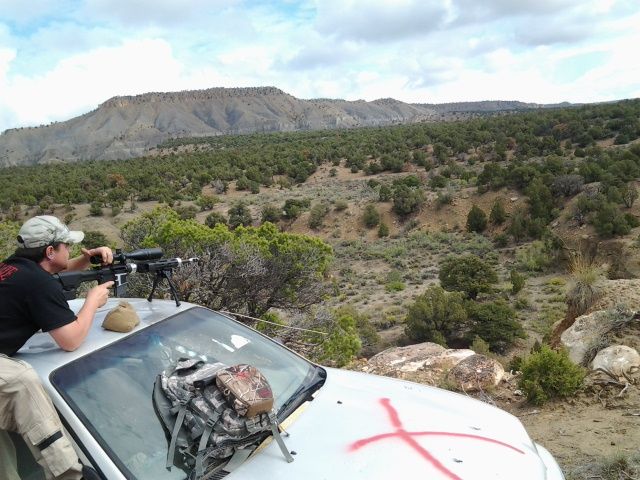You can develop the load all day long, but if your rifle's foundation, i.e. the interface between the barrel and the receiver, is out of square, that dog won't hunt.
Ask any of the reputable rifle builders who are known for accurate upper receiver and rifle builds, and they will all agree that a square upper receiver face with a true extension tunnel is a starting point.
Let's say the OP does some OCW, but continues to get fliers. What will you tell him then?
Eliminate the foundational variables, then do some OCW. Chances are 999 out of 1000 that the DPMS upper does not have a square face. Without a square face, the barrel will settle erratically with each shot, and the next will be fired on a different foundation.
Also, for the barrel length the OP is using, it is standard practice among hi-power an accuracy nazi shooters to bed the extension in the upper, especially if there is all kinds of slop like you see on low-end, mass-produced upper receivers.
We've been through this before here, and the forum member took two rifles that were hovering around 1 MOA, and turned one into a repeated sub 1/2 MOA gun with 5rd strings, and the other a consistent sub-3/4 MOA gun (with a barrel that had no accuracy guarantee at all).
A Krieger deserves a solid, square upper receiver with tight extension tunnel. Would any of you drop a Krieger into a factory Rem 700 action without blue-printing it, then expect 1/2 MOA?
The bolt face should be squared as well. These are just tip-of-the-iceberg accuracy formula steps I'm talking about. The gas block should be bedded as well, if it's a set screw model.
If it were mine, it would get a slightly under-sized upper tunnel in a Precision Firearms, Seekins, or Mega billet set, trued face check, and I would temp-fit the extension by freezing the barrel, and heating the upper. The bolt would be from someone I trust, trued, lapped, ejector radiused, bolt face polished to a mirror, extractor tuned, lugs de-edged, extension polished and de-edged, firing pin hole slightly chamfered, extractor shelf ledge chamfered, gas tube to key interface centered, and a clamp-on gas block installed with balanced fastener torque.
Then I would run the usual checklists on:
* Gas system
* Recoil system
* Fire control
* Magazines
* optics mounting
Then I would load OCW round robin in 3 batches of the same ladders, and head to the range. I doubt any factory ammo would touch it unless I was in a pinch, and then I would use Mk.262 77gr Mod 0, then Hornady 68gr BTHP.
Using that 68gr BTHP load in a Krieger-barreled AR15 built by a guy who followed the accuracy steps I mentioned above, I am able to shoot 2.5" at 600yds with his rifle, at the tail end of dusk. Freaking gun is unbelievably accurate.
Here's the rifle in question:









